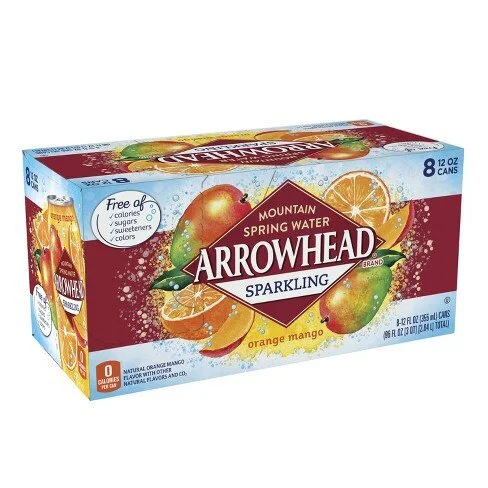In Praise of Flavored Sparkling Water
Some people have the intuition that any food or drink that is pleasurable must be bad for health. I would emphasize instead that it is important to find types of food and drink that are pleasurable enough relative to less healthy alternatives that they can help one stay away from the worst foods in the long run.
In the area of food, I continue to think that—even if saturated fat is less healthy than mono-unsaturated fat like that in avocados, olives, or almonds—sugar is much, much, worse for health than saturated fat. Hence, if adding cream or coconut milk into ones diet helps one stay away from sugar, that seems like a good deal. See what I say in “Does Reducing Saturated Fat Reduce Cardiovascular Disease?”
Turning to drinks, unfortunately, among pleasurable things, there is evidence for harm to health from the most common nonsugar sweeteners and even for alcohol. See
Fortunately, it has been hard for scientists to find serious downsides to caffeine other than the obvious: interfering with sleep, causing jitters and dependence on caffeine to stay awake. Overall, tea and coffee in both their low-caffeine and (with due caution) their high-caffeine forms are relatively healthy alternatives.
In my view and in my own personal practice, flavored sparkling water is a great way to add variety to add variety to tea, coffee, and straight water or unflavored sparkling water.
When buying flavored sparkling water, it is important to verify from the ingredient list that it contains only carbonated water and flavor essences. That still leaves many brands and many flavors within brands of flavored sparkling water.
Even for the wary, worried about harms someone might be able to find in the future from flavored sparkling water (for example, from the BPA that is commonly used for cans of all sorts), I’ll bet those harms are much smaller than all the other drinks flavored sparkling water helps one be willing to avoid:
Fruit juice is laden with sugar and has a much worse insulin kick than whole fruit. (See
The most common nonsugar sweeteners have an insulin kick (which will make you feel hungry) and sweetness itself can make you hungry. (See “Which Nonsugar Sweeteners are OK? An Insulin-Index Perspective.”)
Alcohol has pluses to put against its minuses, but those pluses are not pluses for health. (“Data on Asian Genes that Discourage Alcohol Consumption Explode the Myth that a Little Alcohol is Good for your Health.”) Interestingly, despite talk of “beer bellies,” the health harms of alcohol do not stem from spiking insulin. (“Forget Calorie Counting; It's the Insulin Index, Stupid.”) They work through other pathways.
Milk raises various complex issues in relation to health. (See “'Is Milk Ok?' Revisited.”)
On plant-based milk, I think of almond milk as being OK, although I count drinking any significant amount of almond milk as breaking a fast. There are some other nut milks that are probably just as healthy as almond milk, such as hazelnut milk, but they are hard to find or expensive. Coconut milk has saturated fat, which might be fine, but according to some people is bad. Oat milk may be OK except for a general worry about about grains that I get from reading Steven Gundry. (See “What Steven Gundry's Book 'The Plant Paradox' Adds to the Principles of a Low-Insulin-Index Diet”) Other plant-based milk have seemed to me to have one problem or other. Influenced by Steven Gundry, I avoid cashews because they are a new-world food and not true nuts. (See “Our Delusions about 'Healthy' Snacks—Nuts to That!”) Many people worry about soy. Peas are high in easily digested carbohydrates, so pea milk might be as well.
Given how healthy flavored sparkling water is, I am heartened to see the dramatic growth in sales of flavored sparkling water. (See the Wall Street Journal graph at the top of this post.) Let me report that many flavors are truly delicious. To someone like me, whose taste buds have adjusted to being off of sugar, they taste quite sweet even though they have no sweetener in them.
For those who are new to flavored sparkling water, let me showcase my favorite flavors. (By and large, my family agrees with me on these favorites. I’ll note the few exceptions.)
Coconut La Croix has many fans: see this Twitter thread. The comparison to cream soda helped me appreciate this flavor. It deserves its place among my favorites.
Not everyone in my family likes Cucumber Mint, but I find it refreshing, especially when I am thirsty:
Opinions in my family also differ about Lemon, but I like it.
Bubly is a less expensive brand. The Peach Bubly is a decent flavor, and it has many flavors that only modestly worse substitutes for the corresponding La Croix or Good & Gather flavors.
For me one great boon of flavored sparkling water is that the acidity of even citrus flavors is low enough that I OK despite sensitive teeth that make me have to avoid citrus in other forms. Also, as near as I can tell, they don’t have food colors in them, which reduces my worry about stains if I spill.
One of the difficulties of nutrition research is that both natural and experimental variation often involve replacing one type of food or drink with another, meaning that one is looking at the combined effect of eating or drinking one thing and not eating or drinking another thing. Switching to flavored sparkling water from many, many other drinks is bound to be a big improvement. Switching to flavored sparkling water from straight water or unflavored sparkling water is likely to be a small worsening, in itself. But I also find that flavored sparkling water makes it more pleasant to fast—to not eat for a period of time. And fasting has large health benefits.
For annotated links to other posts on diet and health, see:












